The Pyramids of Giza have stood tall for thousands of years, silently bearing witness to the passage of time, and serving as the final resting place for some of Egypt’s most legendary pharaohs. These awe-inspiring structures, situated on the outskirts of modern-day Cairo, continue to captivate both historians and tourists alike. In this detailed exploration, we will delve into the history, construction, and mysteries surrounding the Pyramids of Giza, providing an in-depth understanding of these magnificent monuments.
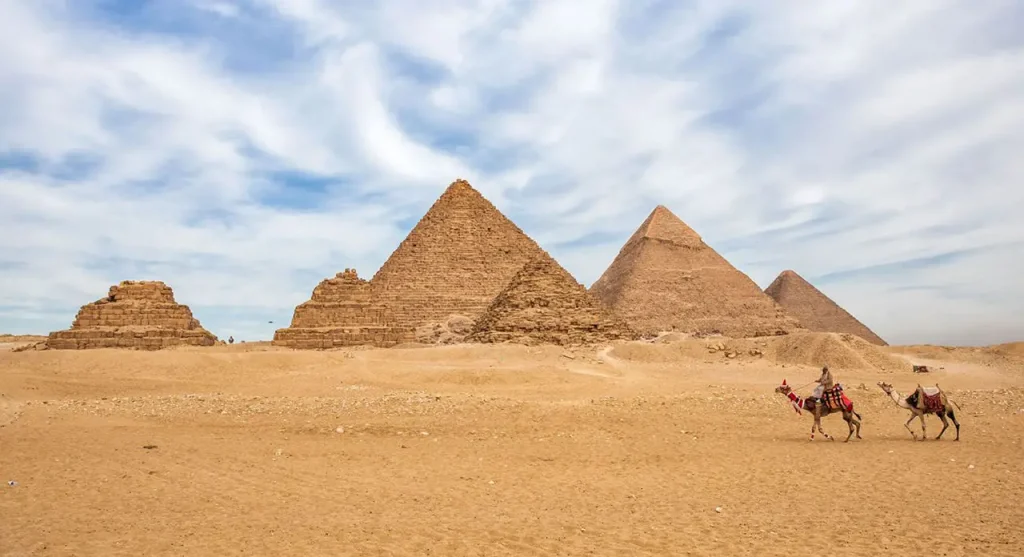
Table of Contents
Brief History of Egypt
Egypt, a country located in the northeast corner of Africa, is known for its rich history, ancient civilization, and remarkable landmarks. The Nile River, which flows through Egypt, has played a crucial role in shaping the country’s development, providing fertile land for agriculture and serving as a vital transportation route.
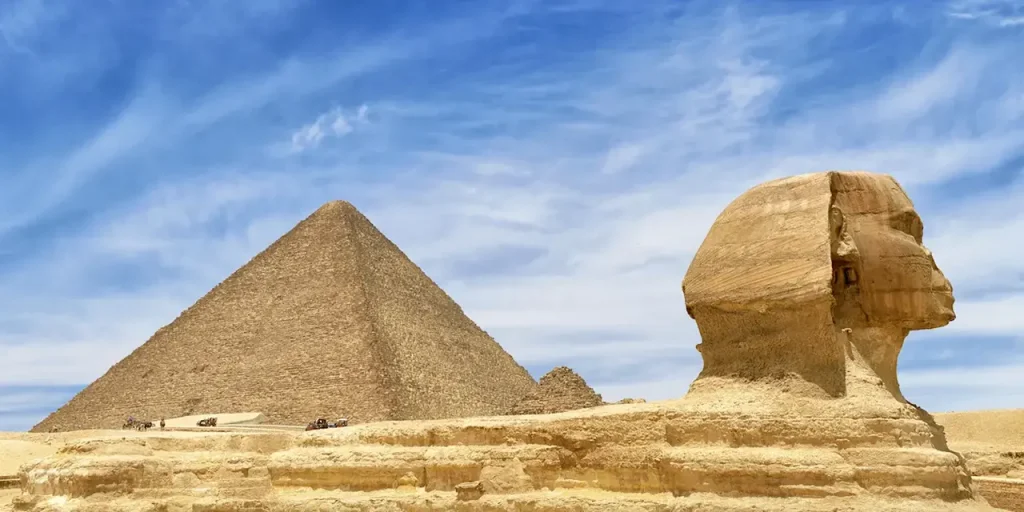
With a history dating back thousands of years, Egypt is home to some of the world’s most iconic monuments, including the Pyramids of Giza and the Great Sphinx. The ancient Egyptian civilization is renowned for its contributions to art, architecture, science, and mathematics.
Modern-day Egypt is a diverse and vibrant country with a population of over 100 million people. Its official language is Arabic, and the majority of the population practices Islam, with the largest religious minority being Coptic Christians.
Egypt has a mixed economy that is heavily dependent on agriculture, tourism, and natural resources like oil and gas. The country has faced various economic and political challenges in recent years, including political instability, high unemployment rates, and inflation. However, it has also experienced periods of growth and development.
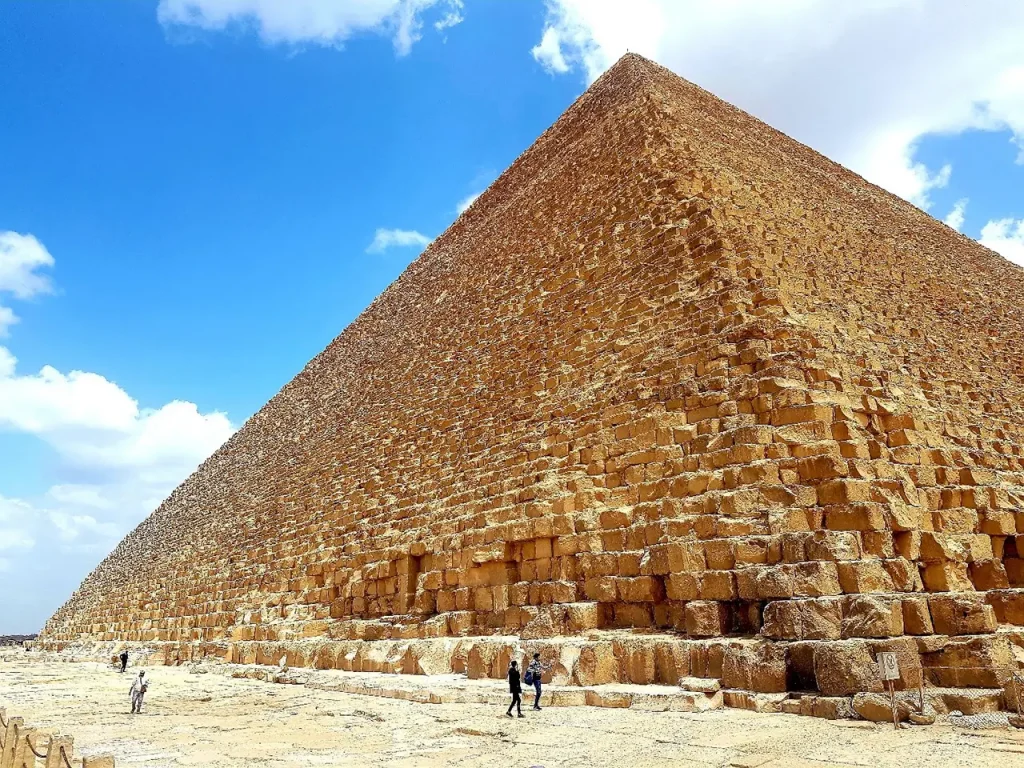
Cairo, the capital city of Egypt, is a bustling metropolis with a mix of modern and ancient architecture. It is home to the famous Egyptian Museum, which houses a vast collection of artifacts from Egypt’s long history.
Egypt’s rich cultural heritage, natural beauty, and historical sites continue to make it a popular tourist destination for travelers from around the world.
History of the Pyramids of Giza
The Pyramids of Giza, located on the Giza Plateau near Cairo, Egypt, are among the most iconic and enduring symbols of ancient Egyptian civilization. These monumental structures were built as tombs for the pharaohs during the Fourth Dynasty of the Old Kingdom, around 2580-2560 BCE.
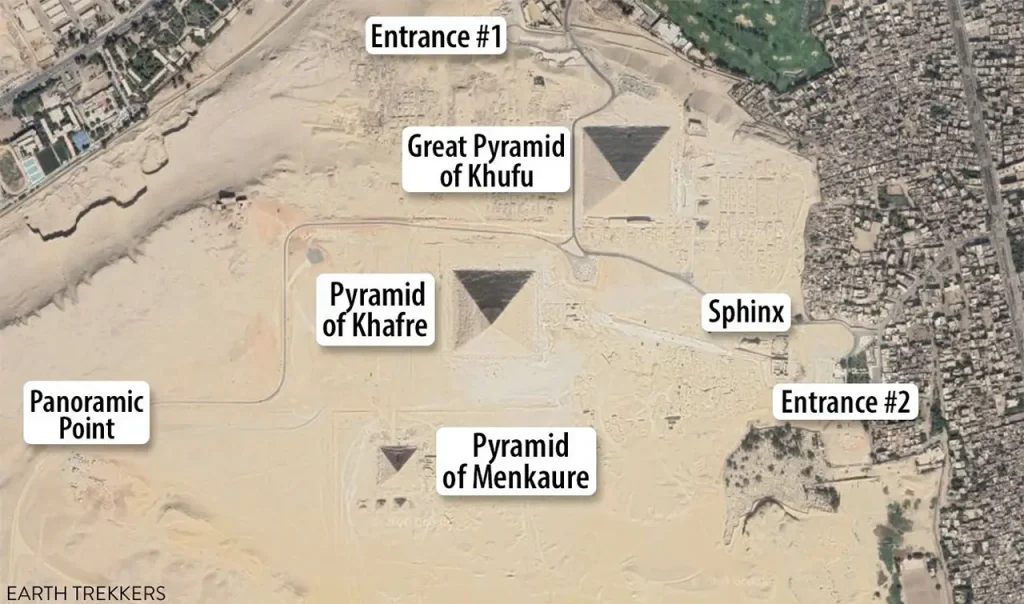
There are three main pyramids at Giza: the Great Pyramid, the Pyramid of Khafre, and the Pyramid of Menkaure. They were built for Pharaohs Khufu, Khafre, and Menkaure, respectively. The Giza pyramid complex also includes several smaller pyramids, temples, and the enigmatic Great Sphinx.
- The Great Pyramid of Khufu (also known as Cheops): The largest and oldest of the three pyramids, the Great Pyramid was built for Pharaoh Khufu, who reigned from 2589 to 2566 BCE. It was originally 146.6 meters (481 feet) tall, but due to erosion and the loss of its outer casing stones, it now stands at 138.8 meters (455 feet). The Great Pyramid was constructed using approximately 2.3 million limestone blocks, with some of the largest weighing up to 15 tons.
- The Pyramid of Khafre (also known as Chephren): The second-largest pyramid at Giza was built for Pharaoh Khafre, who ruled from 2558 to 2532 BCE. It is slightly smaller than the Great Pyramid, but due to its location on higher ground and the steeper angle of its sides, it appears taller. The Pyramid of Khafre still retains some of its original casing stones at the apex, giving an idea of how the pyramids would have looked when they were first constructed.
- The Pyramid of Menkaure (also known as Mykerinos): The smallest of the three main pyramids, the Pyramid of Menkaure was built for Pharaoh Menkaure, who reigned from 2532 to 2503 BCE. Unlike the other two pyramids, which are made primarily of limestone, the lower portion of the Pyramid of Menkaure is constructed of red granite.
The construction of the pyramids involved a combination of skilled labor, innovative engineering techniques, and a vast workforce. The precise method of construction is still debated among experts, with theories including the use of ramps, levers, and counterweights. The ancient Egyptians also displayed a remarkable understanding of astronomy, as the pyramids are aligned almost perfectly with the cardinal points (north, south, east, and west).
The Pyramids of Giza were not just tombs for the pharaohs, but also expressions of their power and divine connection. They served as a testament to the strength and stability of the Old Kingdom and were meant to ensure the pharaohs’ immortality. Today, the Pyramids of Giza continue to captivate the world as one of the last remaining Seven Wonders of the Ancient World, drawing millions of tourists each year who seek to unravel the mysteries of these monumental structures.
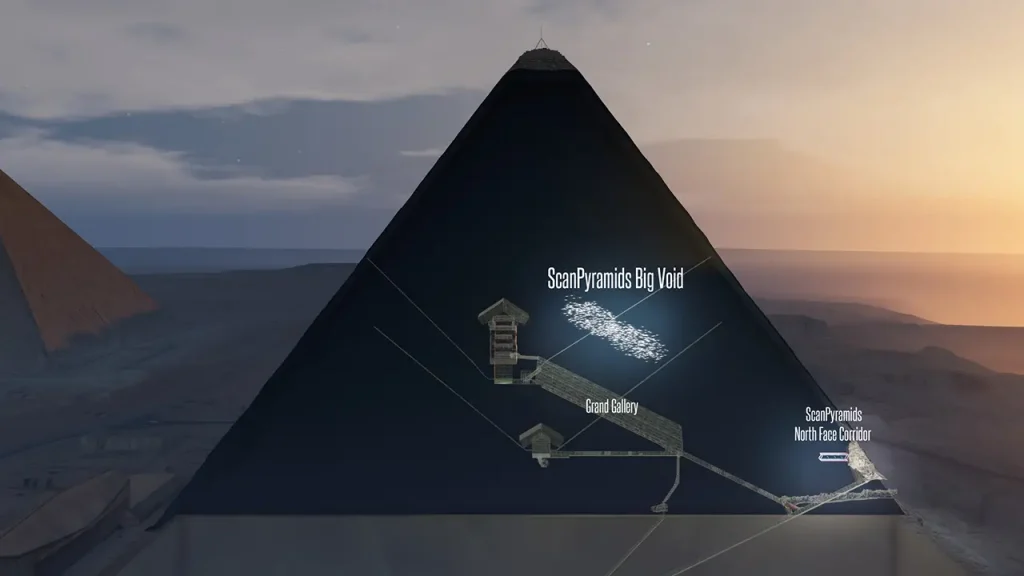
Constructing the Pyramids: Techniques and Challenges
Building the Pyramids of Giza was an immense feat of engineering and logistics. The ancient Egyptians utilized a combination of skilled labor, ingenuity, and sheer determination to construct these colossal monuments.
The pyramids were primarily built using limestone blocks quarried nearby. Each block weighed an average of 2.5 tons, with some of the largest blocks in the Great Pyramid weighing as much as 15 tons. Transporting these massive stones required an intricate system of ramps, sleds, and ropes, as well as the labor of thousands of workers.
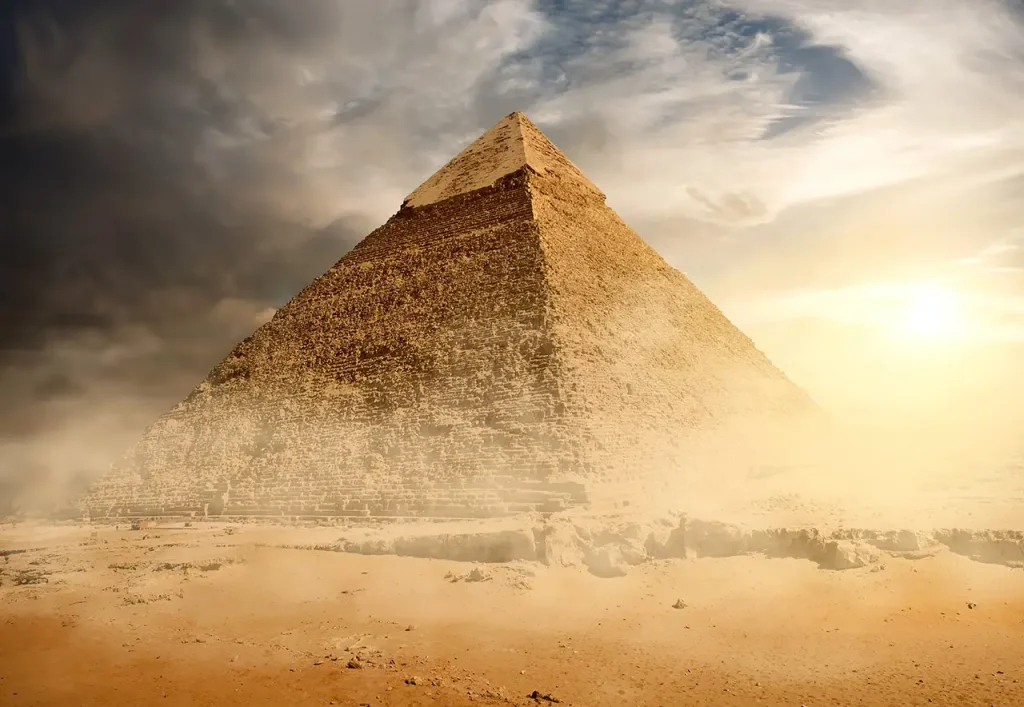
It is believed that the ancient Egyptians used a series of straight and zigzagging ramps to transport the massive stone blocks to the construction site. Recent discoveries have also shed light on the possibility of using water to help lubricate the sand, reducing friction and easing the movement of the blocks on sleds.
The precise alignment of the pyramids is another testament to the Egyptians’ architectural prowess. The Great Pyramid, for example, is aligned almost perfectly with the cardinal points – north, south, east, and west – demonstrating a deep understanding of astronomy and geometry.
Decoding the Interior: Chambers and Passageways
The interior of the pyramids is a labyrinth of chambers and passageways designed to protect the pharaoh’s burial chamber and deter tomb robbers. The Great Pyramid has three main chambers: the King’s Chamber, the Queen’s Chamber, and an unfinished subterranean chamber.
The King’s Chamber, located deep within the pyramid, houses a granite sarcophagus believed to have once contained the remains of Pharaoh Khufu. The chamber itself is a marvel of engineering, featuring massive granite blocks weighing up to 50 tons. The Queen’s Chamber, contrary to its name, is not believed to have been intended for a queen but rather may have had a symbolic or religious purpose.
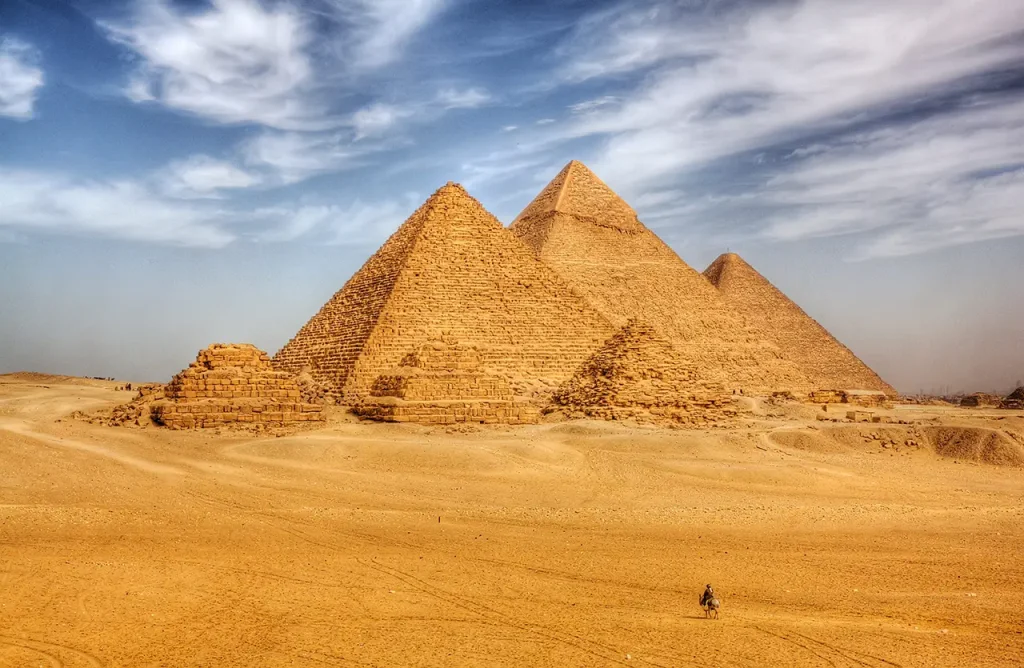
The Pyramid of Khafre also contains a burial chamber, located near the center of the monument, as well as a series of passageways and shafts. The Pyramid of Menkaure, the smallest of the three, has a simpler internal structure, with a single burial chamber and a few narrow corridors.
Unraveling the Mysteries: The Great Sphinx and Theories About the Pyramids
The Great Sphinx, a monumental limestone statue of a mythical creature with the body of a lion and the head of a human, is another captivating element of the Giza plateau. Believed to have been built during the reign of Pharaoh Khafre, the Sphinx has long been a subject of speculation and debate. Some researchers suggest it was created as a guardian figure, while others propose that it may have had astronomical or religious significance.

Numerous theories have emerged over the centuries regarding the purpose and construction of the Pyramids of Giza. Some of the most popular theories include the idea that the pyramids were built by aliens, that they were a result of advanced ancient technology, or that they served as ancient power plants. While these theories may be intriguing, the archaeological evidence strongly supports the idea that the pyramids were built as tombs for the pharaohs and monuments to their power and glory.
The Pyramids of Giza Today: A Lasting Legacy
Despite the passing of millennia, the Pyramids of Giza continue to captivate the world. As one of the Seven Wonders of the Ancient World, they attract millions of tourists each year, who come to marvel at their size, beauty, and the enduring mystery that surrounds them.
The pyramids have also inspired countless artists, writers, and filmmakers, serving as a powerful symbol of the achievements and the enigmatic nature of ancient Egyptian civilization. Today, they stand as a testament to human ingenuity and the timeless desire to leave a lasting legacy for future generations.
Our Latest YouTube Video
Conclusion
The Pyramids of Giza are undoubtedly one of the most iconic and awe-inspiring sights in the world. Their construction and the mysteries surrounding them continue to fascinate historians, archaeologists, and visitors alike. As we delve deeper into their history, we gain a greater appreciation for the extraordinary accomplishments of the ancient Egyptians and the enduring allure of these monumental structures. As they have for thousands of years, the Pyramids of Giza will continue to stand as a testament to human ambition, ingenuity, and the power of wonder.







